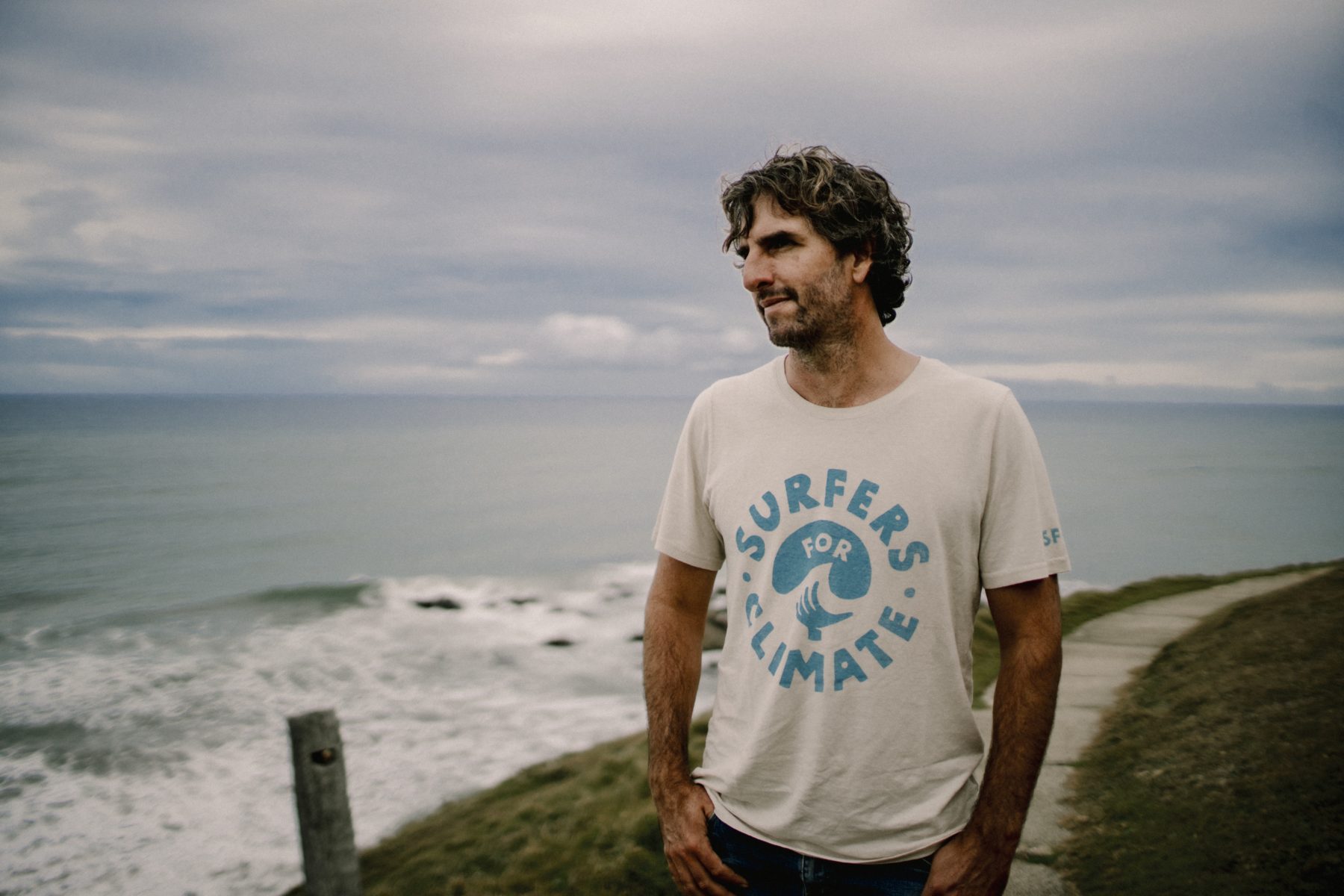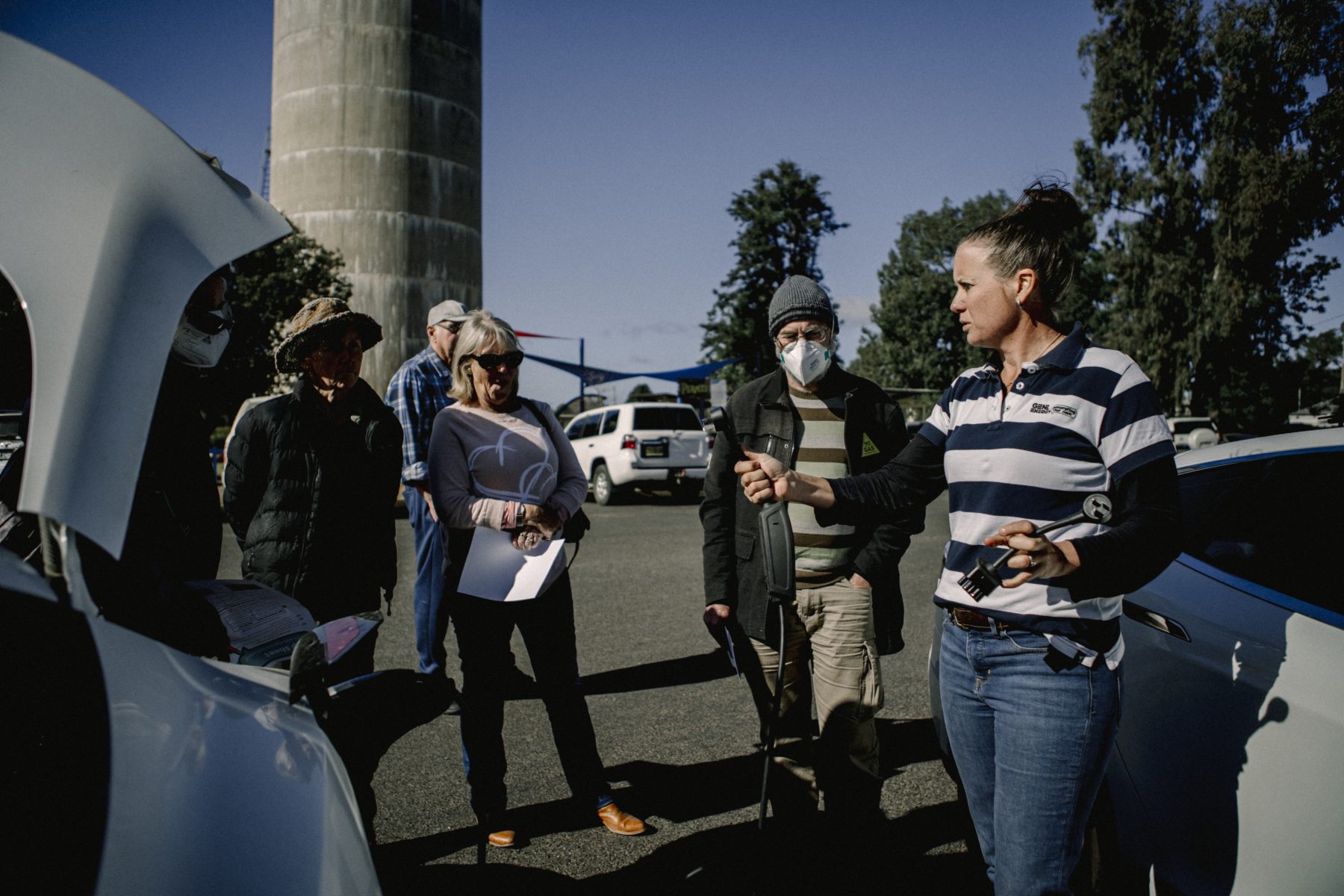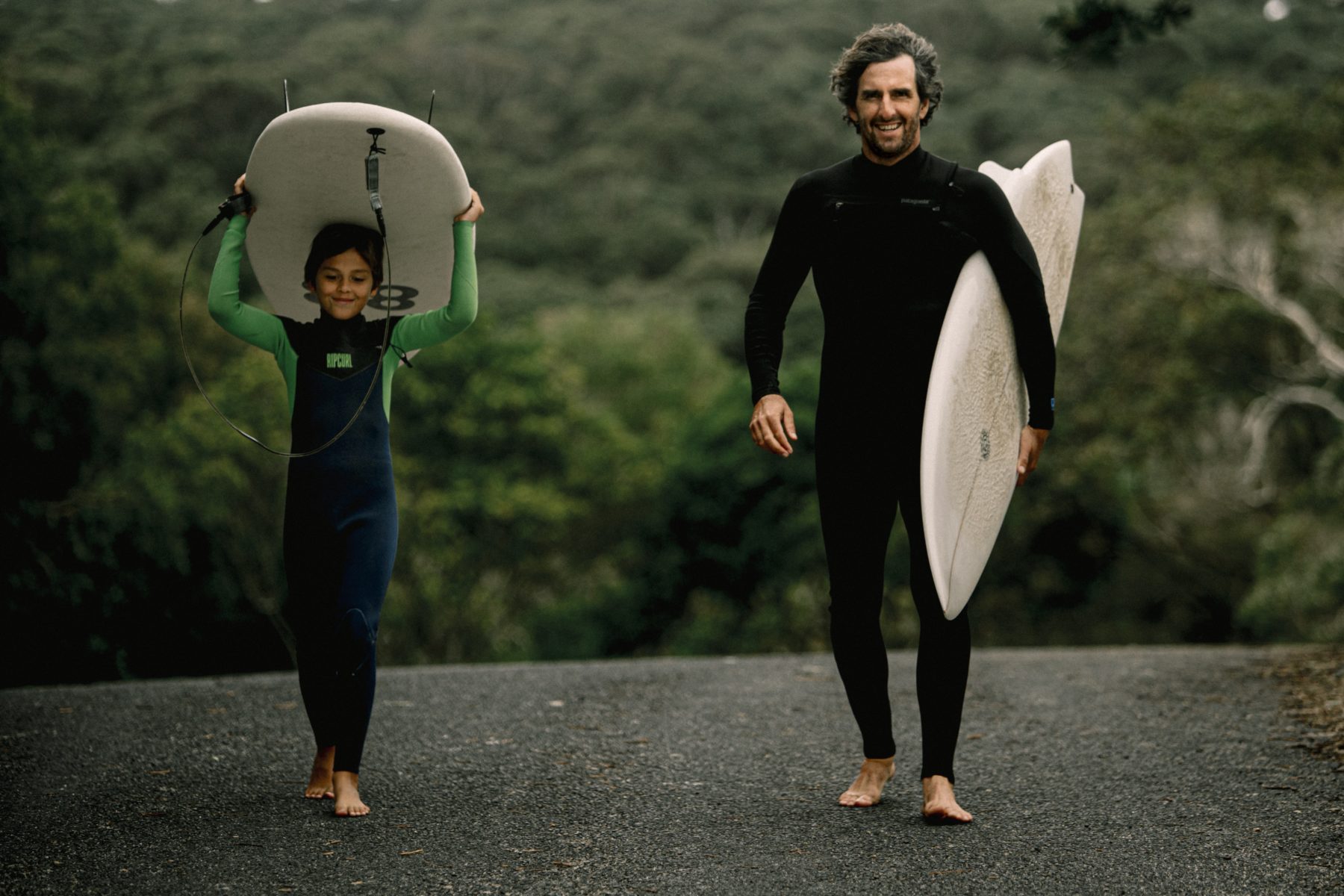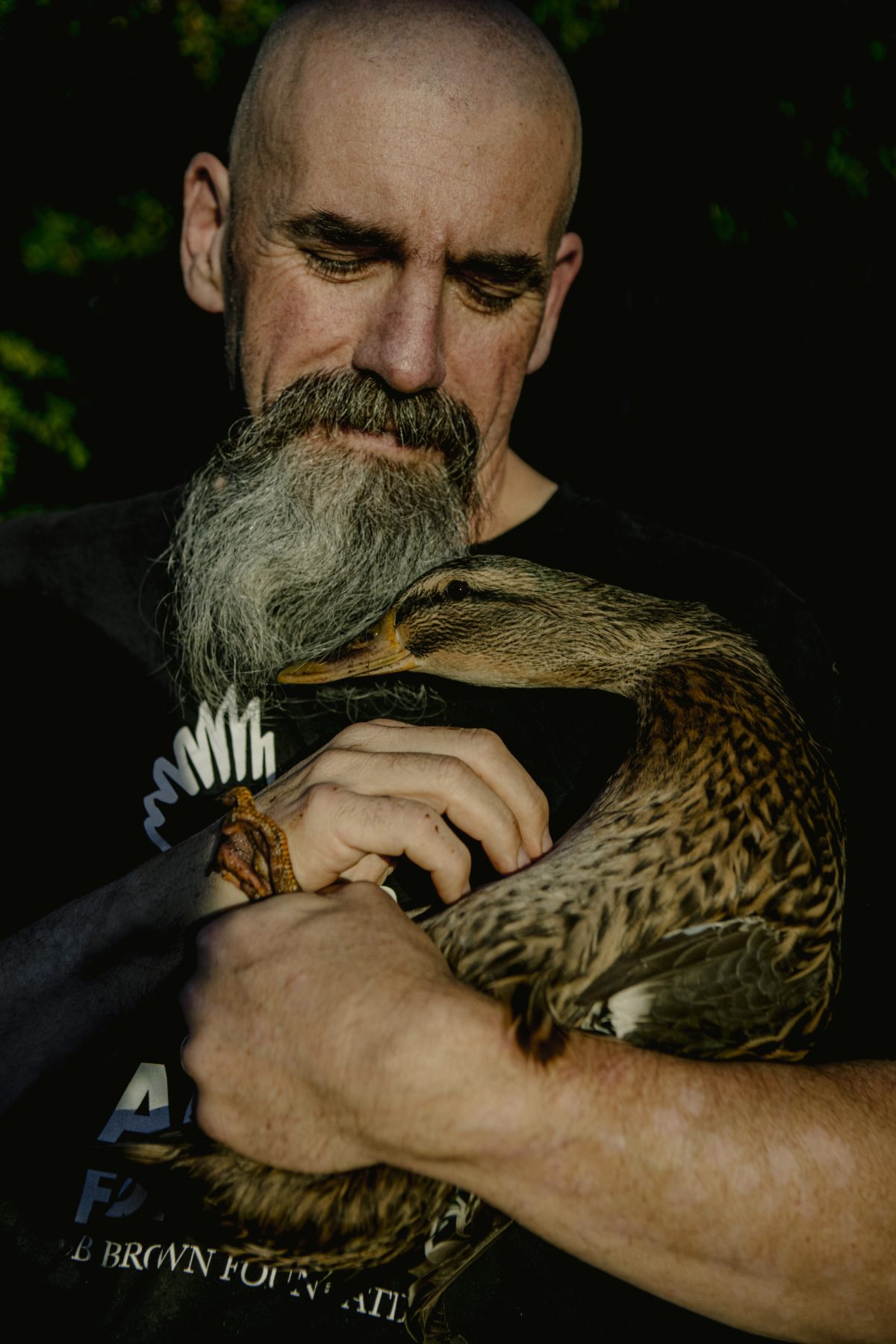This is a story of three Aussie environmental activists and their pathways into caring. It’s about where they started and how they’ve grown, the work they’ve done and the changes they’ve made to their patch of the world. It’s about environment and community – helping to protect one and build the other. And, most of all, it’s about connection and action, about how caring for the world and people transforms helplessness into power and builds skills, purpose and community.
The diversity of activism covers everything from direct-action blockades to High Court challenges and grass-roots education. But although the backgrounds and skillsets of those involved vary, their passion doesn’t.
Sally Hunter, a farmer from Narrabri in New South Wales, established Geni.Energy, a community-energy company, after approval was given for a coal-seam gas field in the Pilliga Forest near where she lives. As with many others, the path into activism began with a deep connection to the natural world.
At first the connection was specific, centred on one area of interest, but it grew into a broader stewardship. As knowledge and connection grew, so too did her understanding of the threat, until there was no option but to act.

It was similar for Scott Jordan, whose patch of the world is the 4950sq.km takayna/Tarkine rainforest in north-western lutruwita/Tasmania. Absorbing the beauty and importance of this huge expanse takes time: it’s difficult to get perspective, understanding or a jaw-dropping view when you’re enveloped in wet foliage.
To develop a better appreciation of both the macro- and micro-scale, you need to explore. Marvel at its size on maps and road trips, visit its wild rivers and be immersed in its dense greenness. Life is crammed in, from deep underground right up to the canopy. Massive myrtles are draped in moss; mushrooms are shaped like fans, fingers and floppy cowboy hats; light filters through the tall tops of tree ferns.
I see only a fraction of what’s there, but Scott sees much more. He observes where forest giants crashed decades ago, letting in light and allowing new eucalypts to grow. He can guess the diameter of trees and when the land last burnt, spot animal scratches and scat. He’s spent the past 18 years protecting this area, developing a deep understanding of the processes that shaped it.
But his connection to this landscape began much earlier. He grew up down the road in Zeehan, playing in the forest, fishing in the rivers. His pathway was laid out: finish Year 10 and get a job in the town’s tin mine.
Then the price of tin fell, and things changed: there were redundancies and unemployment. Scott was lucky, getting six months of work prospecting for gold along the Arthur River, staggering through rainforest carrying backpacks full of dirt. “In my 15-year-old brain, I hadn’t considered what happened if there was enough gold in that sample,” he recalls. “What happened to the rainforest? You’ve got a very limited world view – you only know what’s in front of you.”
When that work dried up, he moved to Burnie, “running amok as young blokes who are bored tend to do, getting into trouble and drinking too much”. Trouble led him to youth work, first as a participant, then as a career. This was the Howard era of the 1990s, and Scott was concerned about the impact Australia’s lurch to the right was having on his clients. He joined the Greens political party because of its progressive social policies and soon became involved in their environmental campaigns.
“I don’t think I would have got involved in an environment campaign if it wasn’t about place. I walked these forests as a kid, and [had] a real strong connection,” Scott says. “So, once I engaged in the campaign, learnt a bit about it and realised my places were at threat…it was that connection to place that became personal for me.” The volunteer in charge of the takayna/Tarkine campaign burnt out in 2005, leaving Scott with encouragement and an office key. He’s been campaigning ever since.
Johnny Abegg’s connection to nature also began in lutruwita/Tasmania, in Dodges Ferry. He began surfing in the cold water there, his dad taking him on adventures around the state. His love of surfing sustained him, drove him, was the main thing in his life. By 15, Johnny had decided to head to the mainland and the surfing pro tour. His parents believed in dreams and following your heart, so the family moved to Byron Bay.
At 23, his dream was over. He’d spent three years travelling the world trying to break into the pro league, racking up $21,000 of debt. On his final tour he took a video camera and made the film On Credit about the struggles of the pro circuit. With that Johnny cracked the surf mags, paid back a chunk of his debt and had the start of a new career. He made films and ads, continued surfing, became involved in environmental projects – writing for Patagonia and short films about rubbish collection on Tasmanian beaches. He married, had kids – Indiana, 10, Alushia, 8, and
Leila, 4 – and his focus changed. “They’re my number-one priority [replacing surfing]…it makes me want to leave the world a better place and do my little bit.”
In 2019 he attended a Climate Council summit. After a weekend of stats and facts, he decided to start a not-for-profit to educate and mobilise surfers around climate action. Campaigner and longboard pro Belinda Baggs (see AG 81) had the same idea, and together they began Surfers for Climate (SFC). “It definitely stoked me out, and still does, that by educating surfers we’re doing something that leaves coastal communities and the coastal environment in a better place for my kids,” Johnny says.

Sally Hunter is a second-generation cattle farmer, living with husband Geoff and their two youngest boys on their property near Narrabri, in north-western NSW. It’s lush and green, with a “food forest” of asparagus, citrus, berries and stone fruit. There are three dogs and 16 horses; 60 cattle graze across the road. It’s changed a lot since the 2019 drought when the family had to sell their herd – there were daily dust storms and they didn’t have enough water to wash their clothes. Their place is bordered by the Namoi River and Maules Creek and surrounded by coalmines – five within a 30km radius – with approval given for 850 coal-seam gas wells in the nearby Pilliga Forest.
Sally’s connection to the land grew as she did, beginning on an organic cattle farm near Roma, Queensland. Her family was part of a band, the church and the community and was always on the land, only going into town once a fortnight. Gas field development began ramping up in the area about 20 years ago. Her parents spent years resisting the industry, worried about its impact on their property and business. “In the end, it all went to shit,” Sally says. “Eight years ago, Mum had a mental breakdown, my parents got divorced and they sold the farm, all within a couple of months. My mum still holds the gas industry partly responsible in ‘the straw that broke the camel’s back’ kind of vibe.”
There have been multiple catalysts for these activists, until action wasn’t so much a choice but an acknowledgement that something had to be done. Then one thing led to another, over and over again. In the process, they developed the knowledge, skills, networks and ability to be effective and make change. They found their people – others who cared, who brought complementary skills and visions. And this ripple spread, as times changed, as people learnt, as hearts and minds opened.
Where Sally lives is prime agricultural land. Conflict between farmers and the fossil-fuel industry stretches back more than a decade, involving impacts on water, community, the environment and cultural heritage. Added to the stresses of farming – drought, floods, the insecurity of income – farmers’ lack of power over what happens on their land is enough to tip people over the edge, and Sally has seen the results: suicide, mental health issues, families destroyed. She’s been involved in numerous campaigns and talks of roadblocks and riot police, of community division and the slow leaching away of people and valued things – forests, nature and the sense of local control.
Sally has been involved in opposing several huge projects during the past three years: the Narrabri Underground Stage 3 Extension, the new Vickery coalmine, and the Narrabri Gas Project. She helped people bare their souls to prepare statements describing the projects’ impacts on their lives – on water, climate, land, family and community. She describes it as brutal, especially when all three projects were approved. Desperate for something positive, she started Geni.Energy.
In 2020 this community energy business opened an office decorated with solar panels and batteries a few doors away from gas company Santos in Narrabri. Says Sally, “All we want is to see more renewables in the northwest. That’s it. We just want to reduce emissions, and we want to help people, and we’d like to be part of the inevitable transition.”

Geni’s work mixes advocacy, education and engagement, emphasising the practical. It analyses power bills to help households save money, suggests, installs and refines solar solutions and also runs education days on everything from EVs to batteries. It’s about education, connection and keeping benefits local, from opportunities and investments to jobs. Sally walks the walk. Her weatherboard house has solar panels, a battery, and an EV in the driveway. (Her electricity bill is tiny, and her fuel bill has dropped from $250 to $35 a week.)
In its first two years, Geni.Energy has had a big impact, installing 406kW of solar and 144kWh of batteries across the region, saving more than 550 tonnes of carbon emissions annually. It’s won an EV-charging station for Narrabri, and the federal government has committed funds for a community battery. But as well as concrete success, Geni is also facilitating underlying change, spreading knowledge and openness, and bridging divides. I met EV-driving coalmine managers and heard about community organisations whose budgets were saved by their solar panels.
Despite being this year’s runner-up for best new business in the Narrabri Business Awards, it’s not all been sunshine. There’s been plenty of scepticism and hard yakka. Sally describes starting from nothing, without any money or knowledge of the sector and just working it out – the directors, partners, research projects, income streams, community, legals, financing, funding and more. “The only way you can survive this stuff is being supported by other people…the people that are willing to make an effort in your community are those who are passionate about these things, and they’re willing to put themselves out there,” Sally says. “They’re the best of the best people around, really super and smart.”
Scott has also found his people, power and purpose through work in community, political and environmental organisations. The 15-year-old “ratbag” is now a competent, compassionate and smart 49-year-old who can’t help but get involved. Proof of this is everywhere, beginning with his small house in the old housing-commission area of Shorewell Park.

The lounge room has the standard: couch, television, framed photos of his wife, Lyn, and four grown girls. Then there’s the unusual: wooden boxes house juvenile wombats and pademelons, and a stocky wombat called Cleopatra bowls around the room. The backyard has pens for older animals, a Hills Hoist covered with fleece pouches, and a Pacific black duck called Duck that thinks it’s human and follows us around adding loud quacks to every conversation. The couple has been wildlife caring for eight years, releasing more than 350 animals back into the wild.
Scott’s not just looking after the animals, but the neighbourhood too. In 1998 it held two dubious distinctions: statistically it had Tasmania’s highest crime rate and was its second-poorest area. The Hunters arranged numerous street parties annually, putting on movies, karaoke, jumping castles and elaborate dress-ups. “You can’t throw that into a community; you’ve got to build it from the inside,” Scott says, detailing how in three years the crime rate dropped from 37 to four reports each month, influenced in part by a community garden and other projects.
But he takes most pride in the takayna team at Bob Brown Foundation (BBF), a passionate, focused bunch committed to protecting the environment through non-violent direct action, building an inclusive, respectful and non-hierarchical movement along the way. “We’ve built this campaign up to a point where if I couldn’t turn up tomorrow, I’d still feel confident that it was going the way it should,” Scott says.
His role is diverse, encompassing everything from writing submissions and keeping on top of legal challenges and shareholder actions, to the daily coordination of blockades – wrangling volunteers, tree-sits, lock-ons, briefings and debriefings, police liaison, media and much more. His knowledge is astounding.During hours of rainforest walks, we talk of everything from the area’s history, ecology and cultural heritage to the social, political and economic background of Tasmania’s extractive industries.
Sally focuses on the positive, but Scott aims for what he and world climate bodies deem necessary – not only an end to old-growth logging, but also the restoration of degraded forests. “The evidence is the planet burns if we don’t keep below 2°C [overall temperature increase]. The old growth is gone – it’ll be lost – and so we can’t compromise on that. We’ve got to push unapologetically for what needs to be done,” Scott says.
Stubbornness is one of his key traits, a good thing because this campaign has already been going for more than 30 years. The area’s importance has been established. It meets seven of the 10 criteria for World Heritage listing, one of only three sites in the world to do so. Public sentiment is also behind Scott and his fellow activists, with polling showing two-thirds of Tasmanians want the area protected.
Momentum is building, but in the meantime the takayna team will stay, following their blockade motto: “One more day than them.” In the past six years it’s been pretty successful – of 2500ha scheduled for logging, BBF has held them to less than 50ha. Scott believes the area will be protected, not only because it has to be, but also because those protecting it have a longer-lasting motivation than pure profit.

In contrast to greenies, surfers are not known for joining groups and banding together. But they do care passionately about their local beaches, favourite breaks, and the ocean environment. Johnny realised that within surfing there wasn’t a targeted conversation about climate change, and so he set about making one – building a website, a movement and a culture.
The primary purpose of SFC is education, but tied to positive action so people don’t get depressed and turn off. Its website is full of information about climate change impacts and actions, as well as campaigns to protect Australia’s oceans, from preventing offshore oil and gas to safeguarding our reefs.
SFC has more than 8000 engaged members and 17,000 Instagram followers, and in 2022 hosted events from Torquay to Byron Bay, organising Car Park Cinema (presenting surf films with an environmental focus coupled with climate chats) and Salty Brains Surf Trivia. It’s also worked on campaigns to stop fossil-fuel projects around the country, from Fight for the Bight to the PEP-11 proposal for the NSW coast, organising petitions and paddle-outs with partners including Surfrider Foundation and Wilderness Society.
Key to success is the way it engages with surfers. Johnny calls it the “thoughtful larrikin” approach, a fun way of opening up the conversation but with clear goals – to mobilise and empower a sea-roots movement for positive climate action. “Surfers don’t like to be told what to do,” he says. “It’s nice that the change comes from them, that they have to reach the point to be receptive.”
Johnny describes being a bit lost before starting SFC, being stuck in the parenting zone where “you lose sight of where you’re going and who you are”. He threw himself in, at times struggling to keep a balance between SFC and family life. Now he says, “It’s beautiful that it’s grown into something that’s beyond just me and Belinda – now it’s actually gathering its own life.”
Surfers for Climate
The aims of this organisation are to turn the surf community into climate champions, end the search for oil and gas in our waters, and create a cleaner surf industry. The biggest issues affecting surfers in Australia are climate impacts and offshore oil and gas prospecting, with proposals affecting the whole coastline of Australia.
Geni.Energy
Geni began as a response to the Santos Narrabri Gas Project, which will see up to 850 coal-seam gas wells drilled into Pilliga Forest’s eucalypt woodland. Its approval in 2020 was the most controversial planning decision in NSW history: more than 23,000 submissions were made during assessment, with more than 98 per cent of them objecting.
Bob Brown Foundation
takayna/Tarkine’s 4950sq.km of wild land has huge environ-mental, ecological and cultural value. Although 80 per cent is reserved on paper, only 5 per cent is within reserve categories protecting it from mining and logging. Bob Brown Foundation wants the area protected in a World Heritage–listed national park, returned to its First Nations owners.
bobbrown.org.au/campaigns/takayna






